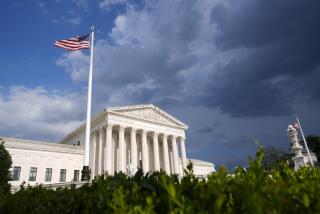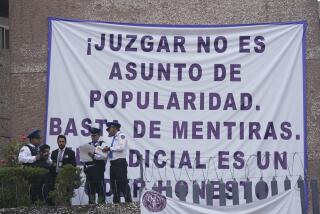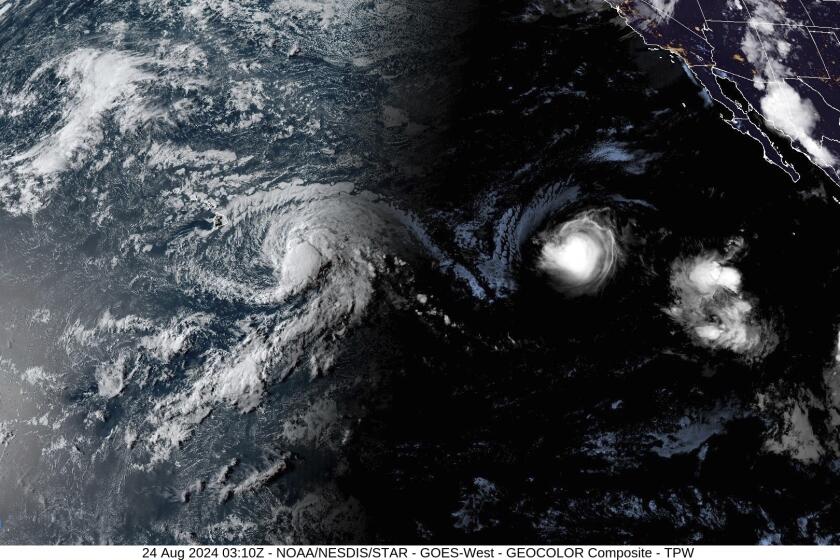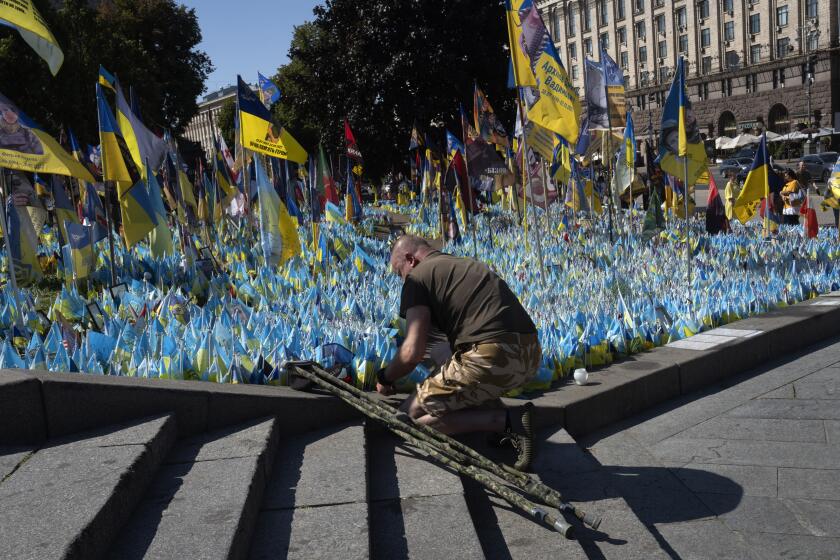Tales of Ghorba, Tango and the Four Boxes : Tower Report: From Testimony to Trivia
Who said that Lt. Col. Oliver L. North and a CIA official happily “kissed” Iranian officials and “made again dinner party” when they secretly met in Frankfurt, West Germany, in February, 1986, to discuss trading arms for hostages?
The answer is Manucher Ghorbanifar, as a growing number of fascinated readers, who have spent hours happily poring over the 290-page Tower Commission report on the Iran- contra affair since its release last Thursday, already know.
The report is a unique collection of cables, computer messages, memos, reports and testimony from participants in the affair. While students of political science will long analyze the historical document, trivia buffs may dig out nuggets from a gold mine of detail about the diplomatic derring-do and fatally flawed decisions that have led to political fiasco for the Reagan Administration.
$5.50 in Paperback
About 300,000 paperback copies of the report are expected to go on sale at $5.50 each in bookstores in Los Angeles, New York and Washington today, and nationwide distribution is scheduled Tuesday. What follows is a brief reader’s guide to some of the code names, aliases and other surprising details in the Tower report.
Start with Ghorbanifar, whom the United States relied on for more than a year to gain release of the hostages. How many CIA polygraph tests did Ghorbanifar fail?
Answer: three, including one in January, 1986, in which he “indicated deception” on 13 of 15 questions. Results of the other two questions were “inconclusive.”
What happened as a result? The CIA and National Security Council continued to rely on Ghorbanifar, even allowing him to claim 60% profit on one of the arms deals.
By what aliases was Ghorbanifar known? He was identified as “Nicholas Kralis” when he met then-NSC staffer North in an office next to the White House on Oct. 8, 1985. Usually, though, he was just “Ghorba” or “Ashari.”
‘Lies With Zest’
What did North and other U.S. officials call Ghorbanifar? “A crook,” “a self-serving mischief maker,” a “congenital liar,” and “a guy who lies with zest.”
U.S. officials also used code names and aliases. North, who was at the center of the Iran-contra affair, carried a U.S. passport in the name of “William P. Goode.”
Similarly, CIA Iran expert George Cave was “Sam O’Neill,” retired Air Force Maj. Gen. Richard V. Secord was “Copp” and Secord’s Iranian-born business partner, Albert A. Hakim, was “Abe.” Thus did Secord write a memo saying, “Abe did a beautiful job of rug merchanting with an Iranian official. . . .”
Always fearful of disclosure, U.S. officials used other codes as well. The four U.S. hostages in Beirut became the “four boxes,” the “4,000,000 dollars,” or the more understandable “LebNap victims.”
Tehran Becomes Tango
Sophisticated radar units for Iranian HAWK anti-aircraft missiles were “Quties.” Tehran became “Dubai” or “Tango.”
What did President Reagan write in his diary on Jan. 17, 1986, after signing a “finding” authorizing the covert operation? Answer: “I agreed to sell TOWS (a portable anti-tank missile) to Iran.”
And what Latin phrase did the Tower Commission quote to describe their concern about the failed policy? “Quis custodiet ipsos custodies. “ Translation: Who will guard the guardians?
More to Read
Sign up for Essential California
The most important California stories and recommendations in your inbox every morning.
You may occasionally receive promotional content from the Los Angeles Times.







